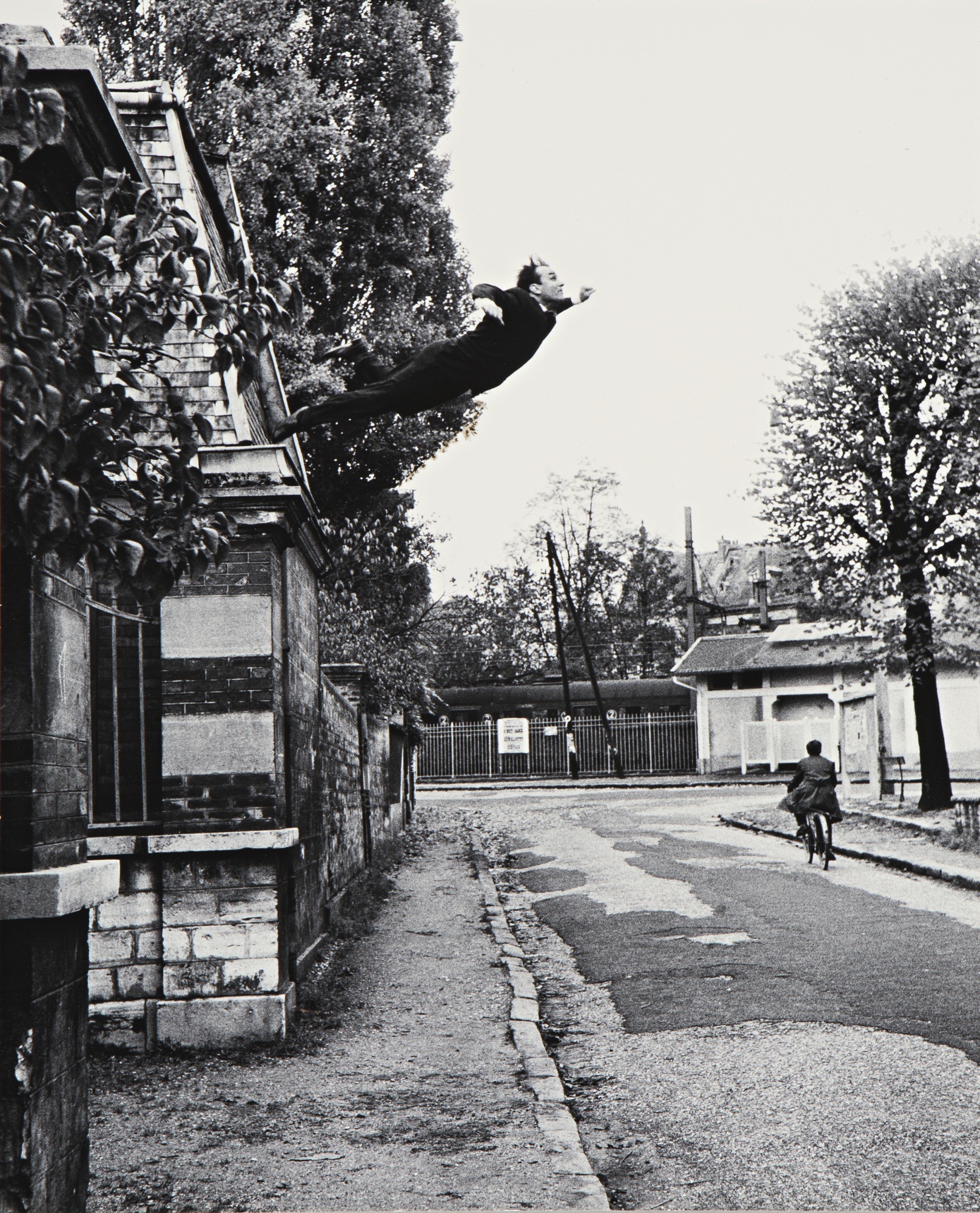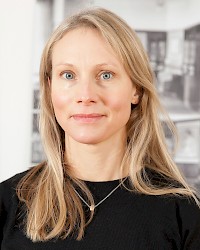(THIS ARTICLE IS MACHINE TRANSLATED by Google from Norwegian)
I come home from a press preview of the exhibition The moon – from our inner world to outer space at the Henie Onstad Art Center – and shows my daughter paintings and photographs from the exhibition catalog. She sees my notes in the margin and even wants to write something on a piece of paper – "Go to the moon in a space rocket." shoots out the back. We then watch videos of the moon landing in 1969 on YouTube and listen to Frank Sinatra. «Fly me to the moon. Let me play among the stars. »
I think about how easy it is to move in text. Simply saying, "Go to the moon in a space rocket," brings with it an experience of speed and power. The idea goes to the famous photograph Saut dans le vide from 1960 by Yves Klein throwing himself out of a building, into the air in a street in France, with a rising motion to occupy the airspace. The photograph, which is part of the exhibition, he made in collaboration with Harry Shunk and John Kender. This was before Laika, Gagarin and the first manned moon landing in 1969.
The moon landing is celebrated after 50 years with an exhibition at Henie Onstad Art Center. I have a kind of unspoken sibling to the myth of Ikaros, the one who got wings and flew to the sun – a desire motive. We all know how the ended.
Visual vocabulary for the cosmos
The exhibition is a collaboration between the Louisiana Museum of Modern Art and the Henie Onstad Art Center and contains sketches, objects, photographs, installations, text and paintings.
Also the music score that has traveled to the moon via morse codes where the signals were reflected back. As the moon is hollow, not all the signals return, and what is left of the piece is played on a ghost wing.
According to Bruno Latour, it is easier today to imagine the downfall of the earth than that of capitalism
end.
We see future optimism going hand in hand with a critical look at humanity, imagining possible scenarios in space. And we get to see past notions of the same room that today can arouse laughter.
The exhibition contains six zones or "stations" under the headings "Selenography", "Moonlight", "Moon of Myths", "Moon Landing", "Space Colonization" and "Deep Time", which offers a range of approaches to the moon – but also to ourselves . The fascination with the moon is expressed in both art and science. Art acquires a special significance in the development of a visual vocabulary for the cosmos.

Susanne Østby Sæther, curator of photography and new media at Henie Onstad Kunstsenter, says to Ny Tid: "The exhibition shown in Norway is a scaled-down version of the Danish, it has been concentrated and gained local roots." For example, a Norwegian telescope, developed and used by priest and scientist Carl Abraham Pihl in the late 1700th century, has been borrowed from the Technical Museum. And instead of the Inuit masks that were shown in Louisiana, a copy of the oldest preserved Sami drum known has been placed next to the world's first sci-fi film – a digitally restored version of George Méliès' hand-colored The journey to the moon from 1902. Sæther has also collected works by the Norwegian artists Morten Andenæs and Kirsti van Hoegee.

In front of Ny Tid, Sæther highlights the interdisciplinary nature of the exhibition: "New camera and image technologies enable us to see what we cannot register with the naked eye." For example, artist Trevor Paglen has managed to photograph unregistered satellites – using observational data collected by a network of amateur astronomers.
The exhibition emphasizes that the moon is a joint venture, a place where weapons are not allowed. Still, an underlying militaristic agenda is considered, with the moon as a springboard to reach the rest of space. In this way, the moon reflects the power structures on Earth.
No one owns the moon
The last part of the exhibition, "Deep Time," is about humanity now affecting Earth on a planetary level. In the catalog (the Danish version also applies in Norway) I read curator Marie Laurberg's introduction to the exhibition. She refers to the philosopher Bruno Latour, who believes that we must rethink the relationship between science, politics and culture. For the ice melts and species disappear at a faster pace than the processes of politicians who should be able to prevent such happening. According to Latour, it is easier today to imagine the downfall of the Earth than the end of capitalism.
If we are to believe NASA's plans, we will next go to the moon to stay there and establish a lasting base, perhaps as early as 2028. The moon is referred to as Earth's new suburb. But returning to Henie Onstad Art Center is part of the journey. His latest work is a movie about an astronaut describing the missing of the experienced weightless state – when he returned to Earth.
We have the ingenuity, power, technology and power enough to throw ourselves into new space adventures. Not unlike Ikaros. Yves Klein, for his part, apparently jumped into a safety net that was manipulated away from the photograph.
The Moon – From our inner world to outer space. Exhibition on Henie Onstad Art Center until May 19th
Painting, installation, film, sculpture, photography, literature and objects.


